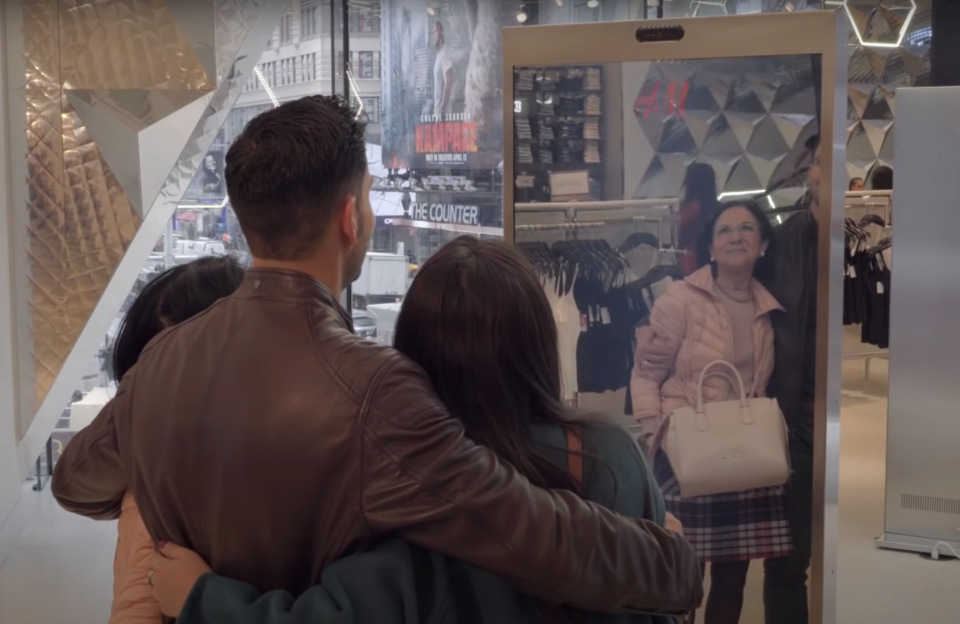A comprehensive guide to China’s latest retail developments
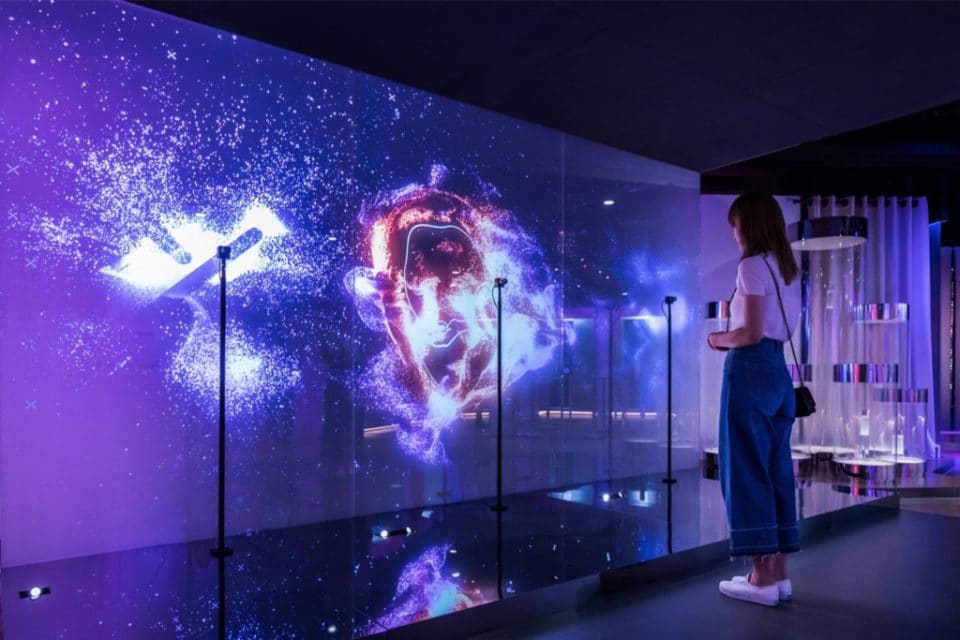
It’s time to sit up and take notice of China – if you haven’t already. After all, this is the year that it will overtake the US to become the world’s biggest retail market, or so a new report from eMarketer says.
What’s more, it’s expected to stay that way until 2022 at least. That’s a pretty amazing feat given that just 10 years ago China’s retail sales were only a quarter of the US’s.
With 800 million consumers though, is it any wonder that China is packing such a retail punch? The country is also the world leader when it comes to ecommerce sales, helped in large part by the efforts of home-grown behemoth Alibaba which sucks up more than 50% of all ecommerce in the country.
It’s this online boom that is helping China to claim retail’s top spot. At present online claims just over 35% of overall retail sales in China. That’s a far higher percentage than any other market in the world. That’s not to discount the importance of physical stores which still bring in more than 65% of all retail business.

The country is also benefitting from greater wealth among consumers even though China’s economy grew at its slowest rate last year since 1990. Rising incomes mean that many people have more purchasing power and are spending more overall. In November, Alibaba had another record-breaking Singles Day, China’s annual shopping festival, with sales of $30.8 billion. Rival JD.com notched up $23 billion of sales, which shows just how big this retail event is as a whole.
This is just the tip of the iceberg for China’s retail though. The country’s adoption of digital innovations like mobile wallets for payment and shopping through social media channels like WeChat are helping to drive growth in sales.
Reportedly, 37% of Chinese customers shop from their smartphones. What’s more, reportedly over 95% of people in China who go online have used a smartphone to do so. Alibaba’s own annual active users number 636 million (although this is across its various services).
No wonder brands from all over the world are looking at how to get a piece of the pie. To do that though you need to understand what’s happening in the market.
Here’s the lowdown on the big retail developments currently taking place in China:
Image credit: Alibaba
New Retail
If you’ve heard anything about Chinese retail, you’ll have heard the term ‘New Retail’. Coined by Alibaba back in 2016, it’s a vision of retail that blends stores, data, online and logistics in a seamless way.
It intends to erase the gap between online and offline retail and instead lets customers shop how they want to shop – whether that’s the instant gratification of in-store, buying online for pick-up, shopping in-store for home delivery… you get the idea. You could argue that New Retail is not actually that ‘new’ but a more sophisticated version of the omnichannel idea that we all know too well.
Key to the New Retail movement though is the smartphone. Given Chinese consumers’ ease with tech and the fact that smartphones go everywhere with us and are often never far from our reach, it makes a lot of sense to put them at the heart of the store experience. By linking up the store and online and adding useful tech integrations, companies like Alibaba are making sure they cater to how customers shop now – and in the future.
One of the best examples of New Retail in action is Alibaba’s very own Freshippo (formerly Hema) supermarkets. The stores are a great mix of tactile and digital experiences that let customers shop how they want.
You can go in-store, pick the groceries you want, pay and go. You can browse the store and get your purchases delivered to your home. Or you can buy online and go in-store to collect. Or you can buy online and have your groceries delivered.
You need to download the partner app to navigate the space. Every product can be scanned to bring up information from when it arrived in the store to logistics information to reviews to recipe ideas. It’s the sort of information we’re used to accessing when we shop online, but now easily translated into the store. Payments are made via the app through Alibaba’s own Alipay or Taobao. There’s also the option to pay through facial recognition if you desire.
Online orders are fulfilled from the store with staff getting orders to their devices, picking goods from the shelves and bagging them up. The bags are loaded onto overhead conveyor belts which whisk them to the back of the store for delivery. You can have your products at your home in as little as 30 minutes from placing your order for delivery.
Naturally, Alibaba is harvesting masses of data from these interactions to help improve its service. This might mean letting you quickly reorder past purchases, but it’s also used to run each store better by tailoring what’s in stock based on local demand.
While there’s all this great tech-powered stuff going on, the store is also a place for customers to physically explore, touch and be inspired by the food on offer. Customers can shop for fresh seafood, which can be prepared and even cooked for them if they wish, visit the café, browse the deli, have food cooked for them ready to eat, and more. In the Shanghai store, there is an app-powered restaurant where your food is delivered by mini robots.
The idea is to give people a feeling of connection to their food, so they get more enjoyment out of buying and eating it. The New Retail approach seems to be paying off as Alibaba has reported that Freshippo stores that have been open for more than 1.5 years see 60% of sales coming from online. This is a big increase compared to overall online sales for the country.
Another interesting use case is JD.com’s 7Fresh grocery stores. The first of these opened last year and much like Freshippo you need the partner app to shop in the spaces. Once in-store you can use the built-in scanners to scan the barcodes on things like fruit. Information about the product will then appear on the overhead screen such as where it came from, how sweet it is and other customer ratings.
Customers can also shop online for delivery to their home in as little as 30 minutes for those close by. As with Freshippo, the store is also used as a distribution point with staff picking online orders from the shop floor. 7Fresh even has its own version of the overhead conveyor system.
JD.com has also looked at other ways to link up physical and online retail with a recent partnership with a number of hotels. The rooms are kitted out with various products that appeal to travellers from electric toothbrushes to power banks. You can try them out during your stay and if you love them you can buy them by scanning a QR code. Delivery is to the hotel or your home depending on your preference. It’s all part of a move towards ‘boundaryless retail’ to use JD.com’s own words.
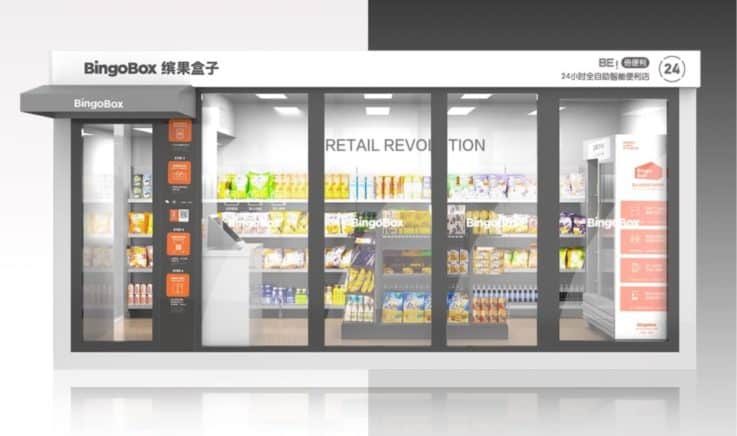
Image credit: BingoBox
Automated stores
We can’t talk about what’s happening in China without talking about the huge rise in tech-enabled automated and unmanned retail stores. It may not have been the birthplace of the movement, or have the PR clout that Amazon has for its Go stores, but it is the heart of it.
There are so many automated retail spaces opening up across the country that it’s impossible to list them all, but there are some key trends appearing in the market. As with most automated retail across the world, China is mainly focusing on convenience stores initially as it works out the kinks in set-up and tech.
The majority of these stores use a partner app and QR codes to give customers access. They also make use of China’s massive Alipay and WeChat user bases to take payment. This makes sense as customers are already comfortable using those services.
The Auchan and Bingo Fresh collaboration BingoBox is one of the oldest and most established automated retail set-ups in the world. It uses cameras and image recognition to identify an individual customer’s purchases, which might make you think ‘so Amazon Go’, but what’s really interesting is that the stores are mobile.
This means they can be located wherever the retailer wants – and could potentially be moved around. This may well be a growth area for automated retail as spaces that don’t need staffing can be applied in all sorts of physical locations where it doesn’t make sense to have a permanent store.
Alibaba also uses cameras and sensors to track purchases at its Tao Café, but has an added extra in that visitors can order and pay for food and drink via a facial recognition system. Naturally, payment can be made by the company’s very own AliPay.
Suning is another company making use of its other business arms. The company’s own finance app gives users access to its unmanned Biu stores. A combination of RFID tags and facial recognition tracks what customers take and charges them accordingly. Biu also demonstrates an interesting possible evolution in the automated retail area by also using facial recognition to make personalised product suggestions to customers.
Auchan’s unmanned Auchan Minute convenience stores let customers shop using the WeChat app rather than requiring them to download yet another single-use app. Products are added to their virtual basket by scanning the barcodes of the real-life items.
EasyGo also uses WeChat for its convenience store but with RFID tags for tracking what is brought. The proliferation of the WeChat service makes its use in automated retail super convenient for customers.
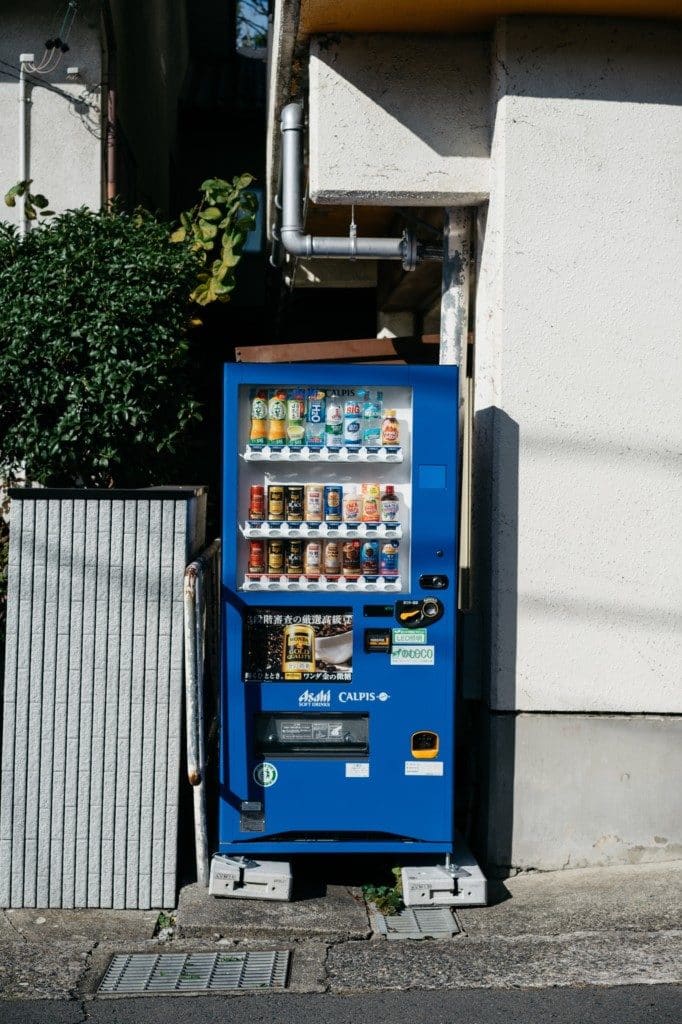
Vending machines
Technically vending machines are a form of automated retail but are a much more established idea than whole stores you can enter and shop without assistance. Vending machines have long been the way that retailers tackled space and location limitations as they have smaller footprints and can theoretically be located anywhere your customers are. They’re also accessible 24 hours a day, so retailers never lose out on sales because it’s after hours (unless the machine happens to be out of order!)
In recent years, vending machines have had some serious tech upgrades in response to China’s move away from cash for payments. From palm scanners and mobile wallet integration to machines that track what’s taken through cameras and sensors, vending machines keep getting smarter.

One example of this is a brand-new idea from Coke in China that combines retail and recycling (with some AI thrown in) in a single vending machine. As expected the machine lets customers buy a drink, but they can also return their empty bottles and cans to it for recycling.
The customer receives credits for doing so which they can use to send friends drink vouchers or buy products made of recycled plastic. The machine uses AI to respond to facial expressions and sound to create its own different expressions via an LED mouth and eyebrows. It’s a cute idea but it also shows how vending is moving into new territory as not just a way of buying but also returning.
Alibaba has even been integrating vending features into new places like the ladies’ room at a shopping centre. In partnership with InTime, this upgraded space features a magic mirror where customers can virtually try on make-up products and take photos.
If they like what they see they can buy the products instantly from an attached vending machine, or scan a QR code and have them delivered to their home. It follows on from a similar smart room for mothers and babies which also featured a vending element for essential goods.
And of course, we can’t talk about Alibaba and vending without mentioning its car vending machine project with Ford last year. The Super Test-Drive Center was completely unmanned with customers signing up to test drive a vehicle via an app.
Once they’d paid their deposit they could schedule a time to collect their car from the multi-storey storage facility for a three-day test drive. Customers who fell in love and wanted to buy the car could visit any Ford 4S store to pay off the remaining balance. It’s a really cool initiative that shows how vending can be applied to almost any purchase to create new ways to buy.
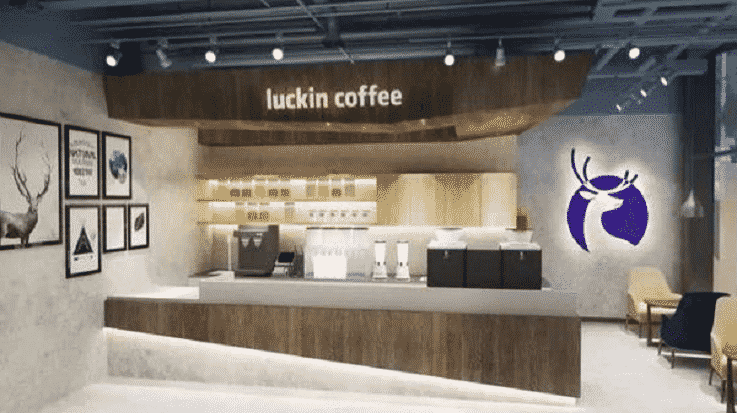
Image credit: Luckin Coffee
Tech powered stores
Automated stores and New Retail aren’t the only tech-based experiments happening in Chinese retail. Retailers are also putting tech into their stores in other ways.
Take the likes of local coffee company Luckin Coffee which has completely designed its spaces around online ordering. The company uses data to figure out where to locate its stores and what type of set-up would work best. As a result, a large number of its spaces are delivery only. Others allow customers to come in and collect drinks that they’ve ordered in advance.
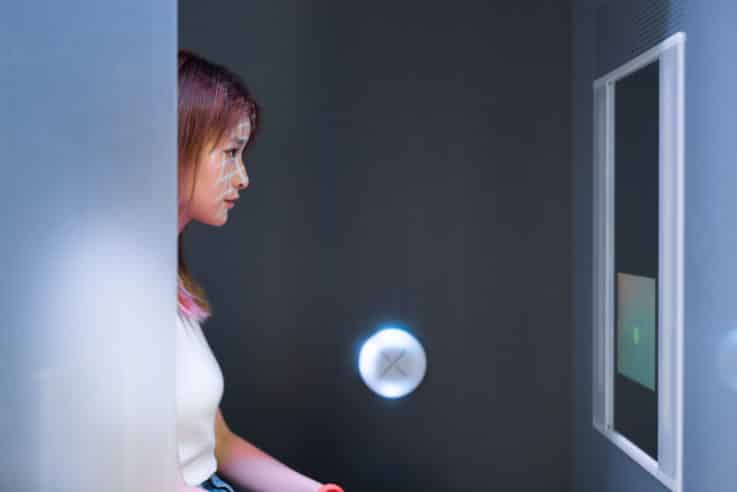
Image credit: SK-II
Meanwhile, beauty company SK-II has opened its Future X Smart Store in Shanghai which it is calling ‘the store of the future’. It uses all sorts of tech from AI to facial recognition to help customers on their beauty buying journey. A digital wall can read your facial expression to generate a personalised piece of art, while a smart booth can scan and analyse your skin to provide personalised recommendations.
SK-II is pushing tech integration even further with the launch of a smart bottle for its best-selling Facial Treatment Essence. The smart packaging partners with an app to help customers with their skincare routine once they’re in their own homes. This is the sort of useful development that we could see taking off.
There’s also a new payment feature where customers who have a specially created bracelet from ecommerce company Jingdong can pay with a wave of their wrist. A bit of a gimmick perhaps but the partner element is an interesting one.
Last year Alibaba showcased a new AI-powered concept for fashion handily called FashionAI. The company launched a pop-up store in partnership with the brand Guess to show the tech in action. All of the products stocked were fitted with an RFID and gyro-sensor enabled tag. This meant that the store could track which items were picked up, put down, or moved around, as well as store information on size, colour and more.
The tags also interacted with the smart mirrors in the store to display information on the products customers picked up. The mirror could also use this information to suggest complementary products, let customers request different sizes and colours, or add items to a virtual basket that staff then put in the fitting room ready to try on.
For those who weren’t sure they wanted to buy on the day, a new virtual wardrobe feature in Alibaba’s Taobao mobile app let them save what they tried on for later. Once again, the app also suggested products that could work alongside them.
For Alibaba and Guess, the experiment provided all sorts of interesting customer data right down to what products people interacted with more. Alibaba now plans to roll out FashionAI more widely, so expect to see this type of set-up elsewhere in the future.

Robotics
China is also getting in on the robotics experiments. At the moment a lot of these ideas are focused on service rather than retail specifically but as ever there’s a lot of opportunity for crossover.
Last year Alibaba announced that it was trialling the use of robot ‘butlers’ in hotels. The metre-tall robots deliver things like food and laundry to guests and can talk to them via Alibaba’s voice assistant AliGenie.
The company is looking at the potential to expand the robots into other areas like hospitality and offices. It feels like there’s a real possibility in the future for people to request purchases and the robot to deliver them.
We also love Ratio. The robot-manned café and bar is now a permanent fixture following a pop-up last year in Shanghai. Customers place their order and pay from their phone and the robotic arm prepares it for them.
There’s still a human element to the space with people providing the table waiting service as well as support and information. But it’s the robotic element that really sets Ratio apart because it lets customers personalise their drinks right down to the exact amount of water in them.
Robotics are also making more and more inroads in Chinese logistics. Already this year JD.com has launched smart delivery stations that can be used to enable drone and robot-carried deliveries. Robots are expected to handle 50% of deliveries from the stations which may number up to 2,000 packages a day. The robots can autonomously navigate to customers’ homes and use facial recognition to make sure they hand deliveries over to the right person.
JD.com is also responsible for one of the world’s most automated warehouses in the world where the work of hundreds of robots is monitored by just four humans. Products are packed, wrapped, and loaded onto trucks by robots in a glimpse of what may be the future of warehousing.

What’s next?
Who knows? If China has proven anything so far, it’s that it’s a hotbed for new developments in retail. There are some clues though.
Retail as a service is likely to be a growing area as evidenced by the fact that Alibaba is already giving other businesses access to its New Retail tech. It’s a move that makes sense in that if you want to drive a cultural change in how people shop you need to give them stores that enable that. Likewise, if the Freshippo stores are setting a new standard of expectation then other retailers are going to want to be able to offer customers the same.
JD.com is also taking steps into a service offering, most recently with the launch of its open blockchain platform. This tech helps its customers get more transparency and security over their operations.
We also can’t forget about the masses of data companies like Alibaba and JD.com have about shoppers and what they want. It’s the kind of knowledge that can be given to brands to help them improve their offering. Expect to see more of this sort of knowledge exchange especially in the case of international brands looking to get a foothold in the lucrative Chinese market.
The likes of Kroger and Starbucks have already partnered with Alibaba to try and quickly gain a presence locally. This is where retail as a service really comes into its own. Rather than having to create networks from scratch, Kroger and Starbucks are both able to benefit from Alibaba’s well-honed logistics presence and brand reputation.

One thing that’s likely to make a big impact in the future is the introduction of 5G. This is a serious step change in terms of mobile internet speeds and this opens up all sorts of new retail opportunities. This is not just on the front-end in terms of connected stores and apps, but also retailer operations. With China’s track record for digital innovation, it’s likely that we’ll see some interesting early approaches from its big players.
Chinese retail is on the up-and-up right now, but more than that it’s a glimpse into what may come for the rest of the world too. It’s a place for innovation and early adoption which is why you ignore it at your peril. Because what’s in China today, may be in your local market tomorrow.
For more inspiration from China, check out our mini Shanghai seated retail safari for a look at all the latest trends. Or to explore it in real-life get in touch about booking a bespoke China retail safari.

